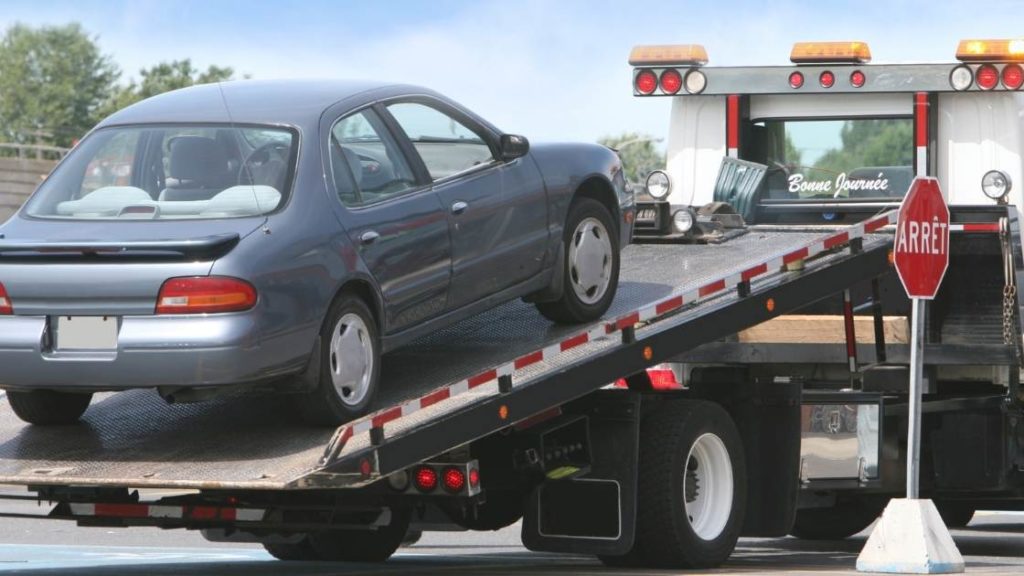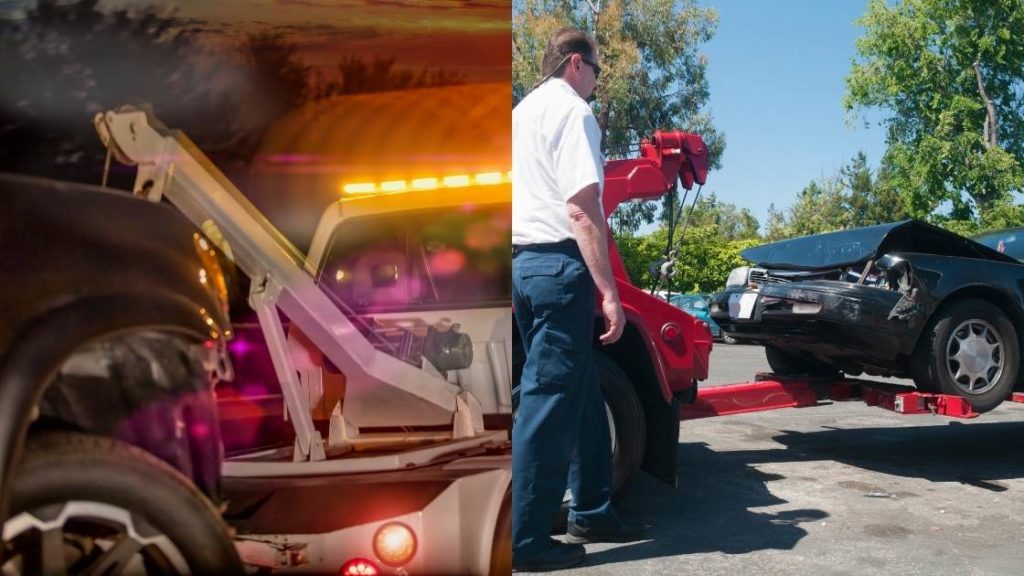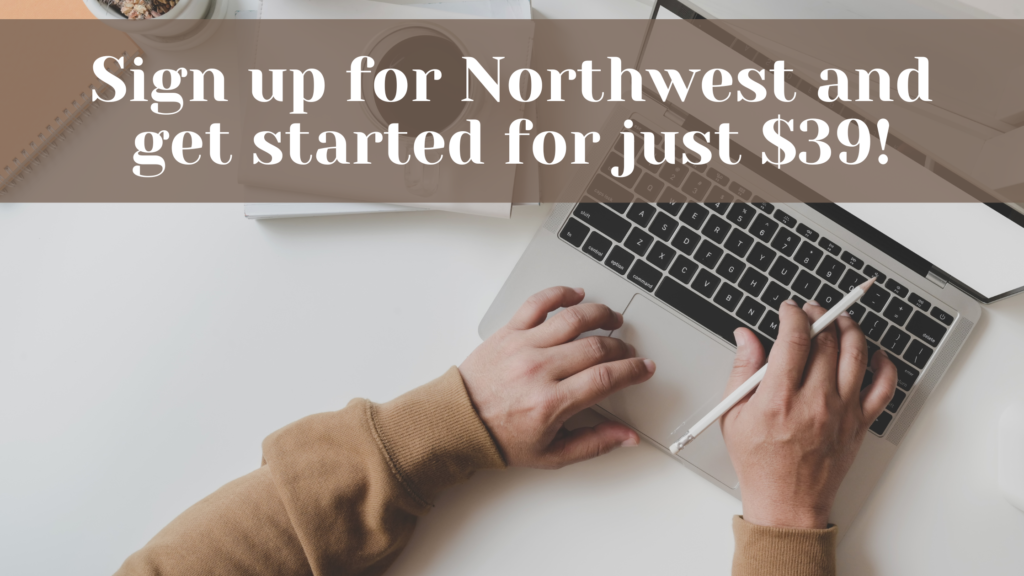If you are interested in starting a roadside assistance business, but don’t know how to begin, you are in the right place.
In this article, I am going to cover how you can start your own roadside assistance business in 7 simple steps.
We will discuss each critical step of the process, from formation of your business entity and preliminary market analysis, all the way to launch (and how to sustain your business via strong marketing and online platforms that will send a steady stream of jobs your way).
We’ll start by answering some key introductory questions including (i) what are roadside assistance businesses (and what services do they offer), (ii) how much money do they make, and (iii) how much do they cost to start.
We’ve got a lot to cover, so let’s get into it!
This post may contain affiliate links. If you click on a link and complete a transaction, I may make a small commission at no extra cost to you.
The information contained in this post is for informational purposes only. It is not a recommendation to buy or invest, and it is not financial, investment, legal, or tax advice. You should seek the advice of a qualified professional before making any investment or other decisions relating to the topics covered by this article.
What is a Roadside Assistance Business?
A roadside assistance business is a business that helps motorists who are stranded on the road due to a disabled vehicle. Such assistance could include providing gas, fixing flat tires, offering jump starts, or ultimately towing the vehicle to a nearby mechanic if a roadside repair is not possible. A roadside assistance business generates revenue by collecting fees in exchange for providing these services.
How Much Money Can You Make with a Roadside Assistance Business?
Although there isn’t data around revenue for a roadside assistance business that is perfectly on point, I was able to find some pretty reliable data for tow truck operators. As you can imagine, a large part of roadside assistance is being able to tow a stranded vehicle to a local mechanic’s shop, so I think it’s a pretty good proxy.
According to ziprecruiter, the national average income for a tow truck owner operator is $88,156, which translates to approximately $42 per hour.
ZipRecruiter reported seeing revenue as high as $228,000 and as low as $19,000, with top earners (90th percentile) making $207,500 per year.
Those are some compelling numbers on the top end, but as with all businesses, nothing is guaranteed and your results may vary.
Some of the things that could affect your profitability include how well you market your business, how many jobs you can get on a consistent basis, whether you have employees, and how well you manage your ongoing expenses in general.
How Much Does it Cost to Start a Roadside Assistance Business?
If you want to start a roadside business with a brand new flatbed tow truck and you don’t finance or lease it, you’ll need at least $75,000. If you finance or lease your vehicle, you may be able to dramatically reduce that amount to just a few thousand dollars (some dealers offer no money down options if you qualify).
Ok, let’s unpack all that.
The cost of starting a roadside assistance business is going to be largely driven by the cost of your tow truck. There are other expenses, such as equipment, permits and licenses, insurance, etc., but the biggest cost is going to be your truck, so let’s tackle that first.
At a minimum, you will need a basic pick-up truck with towing equipment that has enough pulling capacity to move most vehicles to the required location. If you want the latest and greatest, many roadside assistance businesses now use flatbed tow trucks.

A flatbed tow truck is also known as a rollback or slide tow truck. This is because of the way it performs the towing operation. Your tow truck has a hydraulic inclined bed which can be lowered all the way to the ground. The disabled vehicle can either be driven up to the platform or pulled onto it.
The great thing about these types of trucks is that they make transporting the towed vehicle extremely secure. None of the wheels are touching the road, so there is no risk of damage to the car due to potholes, etc.
How much do they cost?
That’s the downside. New rollbacks can run well over $100,000, but I have seen some that sell for around $70,000. Now if you go used, the prices drop significantly. I have seen used ones for well under that amount (like $30,000).
Now granted, those trucks had a ton of miles on them, so you will need to decide if paying a lower cost now is worth the future headaches associated with constant repairs and dealing with a truck that has limited remaining life.
If you want to see a pretty good selection of new and used flatbed tow trucks, check out commericaltrucktrader.com.
If the cost of flatbed truck seems too steep, there are more affordable options. You can choose to go with a simple pickup truck with a hook and chain (left) or a wheel lift (right).

Wheel lifts are interesting options because they are easy to operate and can tow cars without causing potential scratches (unlike a hook and chain). You can purchase one for around $10,000 here.
Now remember that you can finance the purchase of these vehicles (assuming you have decent credit and income) or you can lease them. As mentioned at the top of this section, you can significantly cut down on the amount of cash you need to start the business if you choose to do that (but keep in mind mileage caps when leasing).
What Equipment Do I Need For My Roadside Assistance Business?
In addition to getting a tow truck, you will need some basic equipment to handle issues that you face day to day on assisting customers. Here is a list of basic equipment you should consider getting for your roadside assistance business.
- Good set of basic sockets
- A lightweight aluminum jack
- Battery tester
- Flashlight
- Booster pack and long (20′) jumper cables
- Lock out kit (to get into locked cars)
- Air compressor (if the customer’s spare tire is flat and needs filling)
- Gloves
- 2 Gallon Gas Can
- Torque wrench
- Impact Gun (it will crack all lug nuts)
- Heavy Metal Head Hammer (for seized up wheels)
- Tire pressure checker
- Tire plug equipment (if you are offering this service)
- Wheel chock (to secure car if car is on an incline)
- Breaker bar (for stubborn lug nuts)
- Screwdriver
- Knee pads (for comfort – you will be spending a lot of time on your knees changing tires, etc.)
Ok, now that we’ve got the introductory stuff out of the way, let’s get into the 7 steps to starting your roadside assistance business.
Step 1: Conduct Market Analysis
The first step is to conduct some basic market research into whether a roadside assistance business is feasible in your local area.
You may be spending a lot of money and time trying to set up this business, so you don’t want to dive in blind.
Identify Your Market
The first step to market research is accurately identifying your market. You need to know who your customers are and whether there are enough of them to support your business.
If you live near busy highways or other major roads that see a lot of traffic, there is probably going to be enough demand for roadside assistance services. The same holds true if you are going to be operating near major population centers.
But if you live in an isolated and low population area, there just might not be enough demand for your services. You can start researching the demographics of your area by going on city-data.com.
But identifying demand is not enough. You also need to look at your competition…
Conduct Competitive Analysis
If you are going to be the only game in town, that’s a good sign. But in most cases, you will be facing some degree of competition. If you live in your target area, you probably know who your major competitors are going to be. But to get a more complete sense of the competition, you can go on Google.
For example, you can simply type in “roadside assistance businesses near me” or “tow truck services near me” and Google will pull up a list of local businesses that match your search along with a map that has pins on where those businesses are located.
You can also go on Yelp and type in a similar search. Between the two, you should be able to get a decent sense of the competitive landscape in you area.
If there’s tons of competition and a lot of companies have gone out of business, that can be a red flag that competition is fierce and it will be very tough to break through.
Market Research Resources and Tips
There are tons of other market research resources as well. Check out this list of market research resources provided by the SBA if you want to explore more options.
If you want to dive more deeply into this aspect of starting your business, check out my full blown article on the topic: How to Do Market Research For Your New Small Business in 5 Easy Steps.
Step 2: Establish Your Business
If your market analysis checks out, the next step is to establish your roadside assistance business.
Select a Name and Logo
This includes selecting the right name and logo.
Having trouble figuring out a name? Try Shopify’s business name generator. It’s free.
As for a logo, you can go on canva.com and check out some of their logo templates and start from there. It’s a free option, but you will need to customize the logo templates to your liking. If you prefer a more ready-made solution, you can outsource this task.
One solid option is to go on Fiverr and hire someone to create your logo. There are tons of people who do this, and I have seen pricing as low as $5. For that price, you can probably try a bunch of folks and pick the logo that suits you best.
Note: You want to make sure your name and logo are original to you and are not going to infringe someone else’s intellectual property. If you are unsure, you can check the USPTO’s trademark search tool as a starting point.
For more great strategies and tips on how to select the right name and logo for your business, check out my full article on the topic: How to Choose a Company Name and Logo [16 Key Strategies and Tips].
Create Your Business Website
Your business needs a website, period.
It doesn’t have to be incredibly fancy or cost a lot of money to set up. There are a lot of resources available to help you with this.
In fact, Google allows you to build your first business profile website for free.
List Your Business So Customers Can Find You
It is also important to get your roadside assistance business on Google. You can do this by listing it on Google My Business. When you do this, people who are searching for businesses like yours in your local area can find you.
If you want to learn more about the process, check out this tutorial from Google.
Set Up Your Business Entity
You may want to set up a business entity like an LLC, corporation, or partnership. In most cases, setting up a business entity can help shield some of your assets held outside the business entity if there is a claim against the business.
But it costs money to do and doing this could have tax implications, so you should consult with a qualified tax and legal expert to help you navigate the issues.
If you do want to make the investment of setting up a corporation, LLC, or some other business entity, you can hire a lawyer to help you, or you can use many of the online services that can help you set up your business entity.
I like Northwest because they can get you up and running quickly and easily. They are also one of the most affordable options that I was able to find that still offered great customer service ($39 as of the date of this article).
According to their website, they are the only national registered agent service that lets you use their office address so you don’t have to use your own. That’s a killer privacy advantage.
Definitely worth checking out.

Step 3: Create a Roadside Assistance Business Plan
A business plan is essentially a roadmap for your business.
It organizes your thoughts relating to your business into an actionable plan. Some things to include in your roadside assistance business plan are budgeting, identifying your target market and competition, marketing strategy, pricing strategy, operational plans, and growth projections.
Don’t stress too much about getting your business plan perfect. I would use it more as an organizational tool at this point. You can polish it up later if you need to.
Another benefit of having a business plan is that it can help you raise money from banks and investors. This may be needed if your business has high starting costs (i.e., you plan on having multiple tow trucks, a storage garage and mechanics shop, etc.).
But if you go this route, you will need to refine your business plan – these folks will want to see a professional-looking business plan as part of their lending or investing process.
Don’t know how to get started? The Small Business Administration has a great tool to help you write your business plan.
Step 4: Buy the Right Vehicle and Equipment
The next step is to buy (or lease) your tow truck and related equipment. We’ve covered both of these topics in detail already, so I won’t rehash that. Make sure you shop around for the best possible deals.
Step 5: Obtain Appropriate Licenses, Permits and Insurance
In many cases, you will need a commercial driver’s license (CDL) to operate a tow truck. To learn more CDL requirements for a tow truck operator, check out this helpful article.
There may be other licenses and permits you need to operate a roadside assistance business, so you should check your state and local rules and regulations.
At a minimum, most states require a general business license, but depending on the scope of your activities, your jurisdiction may require more. A good place to start is with your local county clerk’s office.
Now let’s switch gears and talk about insurance.
As you can imagine, operating a roadside assistance business can pose significant risks. You are on the road and operating a heavy vehicle. Accidents and other mishaps can happen. You may want to consider the following insurance coverages for your business.
- Auto-liability insurance: This will basic insurance will cover you when you’re in an accident (and at fault) and must pay for the other driver’s medical and property costs.
- Physical damage insurance: This insurance with cover any needed repairs to your tow truck during an accident.
- Comprehensive coverage: This insurance will cover costs if your tow truck is damaged outside a collision (e.g., fire, theft, falling objects, etc.)
- On-hook coverage: This type of insurance protects you if any vehicles get damaged while hooked up to your tow truck.
- Garage Liability Insurance: This is not just for businesses that have a garage, it can cover you for claims arising from the day to day operations of your business (e.g., you replace a tire, but it falls off a mile later and the driver gets into an accident).
- Garage Keeper’s Liability Insurance: If you do have a garage where you will be storing towed vehicles, then this will protect against damage to the vehicles while they are stored there.
- Uninsured motorist insurance: This covers injury to you or your passenger by a driver who doesn’t have insurance or if you are a victim of a hit-and-run.
Step 6: Set up Leads to Get Jobs
Getting a consistent source of work is going to be critical to the ongoing success of your roadside assistance business. Fortunately, there are many options you can explore to keep the jobs coming in.
One of the classic ways to get jobs is to work with insurance companies and automobile clubs. When they get a call from a stranded customer, they use their network of providers to handle the request for assistance.
To become part of their network, you will need to apply (typically on their websites) and be accepted. They will often require that you have adequate levels of insurance, so be prepared for that.
A major gripe among roadside assistance providers is that insurance companies often don’t pay much, so you may want to supplement your income through independent marketing and other channels.
For example, you can use sites like Towpanda, Towingleads, Urgently, Honk, Towbook, Swoop, Dispatch Anywhere and Servicedirect to get leads on towing jobs.
Finally, you can independently market your services online and get those lucrative cash jobs. As mentioned, you should set up an online presence and have a website and also make sure your business is listed on Google My Business.
This way, people who are stranded and need assistance can find you when they run a Google search for a roadside assistance business near them.
Other options include listing your business on popular platforms like Yelp. This costs money, but may be worth it, if you get enough leads.
Ultimately, you should test out various strategies and find the ones that work best for you in your area.
Step 7: Hire Employees (If Needed) and Launch Your Business
The final step is hiring employees (assuming you don’t want to run this as a solo operation). Some key tasks that may need employees include a dispatcher, a tow truck driver (who should be able to fix basic vehicle problems on site as well), and a mechanic (if you are going to be offering these types of services as well).
Remember that you will need to comply with anti-discrimination laws when hiring these folks and you will need to set up a legally compliant payroll system.
There are tons of payroll service providers out there, so go with someone who is reputable and offers a fair price. I use SurePayroll for my business. They are affordable, reliable and a well-known player in this space.
Once you’ve got your employees lined up and trained, all you need to do is launch your business. Set your business plan in motion and start getting those jobs coming in!
Conclusion
So there you have it – how to start a roadside assistance business in 7 simple steps. If you want to learn about more great businesses in the trucking and transportation area, check out my comprehensive guide to transportation business ideas, which covers more than 30 ideas that you can explore.

